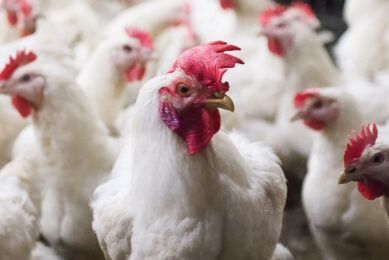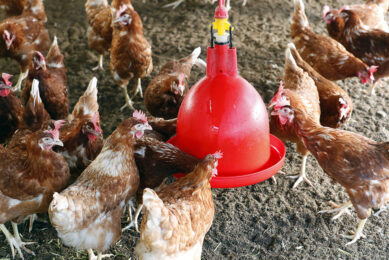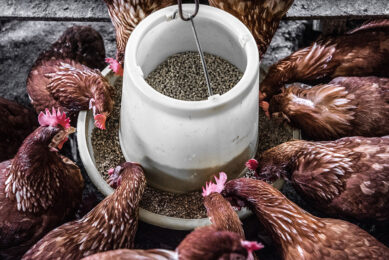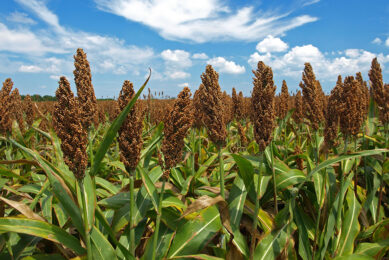Role of nutrition in feather growth
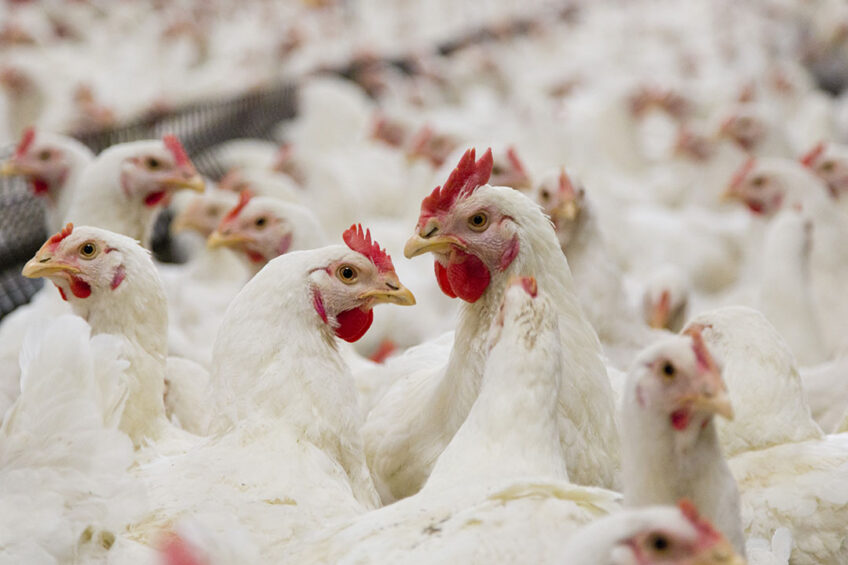
The growth and development of feathers are influenced by a variety of factors of which nutrition is perhaps the most important. Poultry feeds should be formulated to contain all the nutrients needed for feather growth and maintenance.
Feathers act as a protective covering for birds, protecting them from cold and injury, in addition to their role as a means of defence and waterproofing. In breeding terms, feather quality affects mating behaviour and the fertility of the breeding stock since many birds choose their mates based on the integrity and general appearance of their feathers.
Protein nutrition and feather growth
Feathers are composed primarily of a protein called keratin, which accounts for 80-85% of the total mass. Proper growth and development of feathers depend on the supply of adequate dietary protein.
In one study, an improvement in feather condition was found in caged layers with increasing levels of protein from 11.1% to 19.3% in iso-caloric diets and feather score increased by 0.4 – 0.5 points for each percent increase in protein in the feed.
Influence of protein source on feather pecking & quality
The source of dietary protein should also be considered. A protein of animal origin has been considered one of the causes of feather pecking and reduced feather quality compared with protein from plant sources.
Sufficient amino acids vital
An adequate supply of amino acids is also important for feather growth. Methionine supplementation at a sufficient level can suppress feather pecking, but there is often an interaction between methionine and brooding temperature.
Influence on aggression & self-pecking
Chickens fed a diet low in methionine and brooded at a 29°C temperature had less pecking damage than those brooded at 32°C. Increasing the supply of tryptophan above the recommended level (i.e., 22% instead of 3 g/kg feed) influences the level of serotonin in the brain, which in turn modulates aggressive behaviour, fear response, and self-pecking.
Influence on feather structure
The supply of other amino acids such as lysine, arginine, glycine, and tyrosine is also important for the maintenance of proper feather structure and for preventing the growth of feathers in strange parts of the body such as in the digestive tract or other internal organs.
Effects of dietary fibre
An adequate supply of dietary fibre is also important for the prevention of cannibalism and the maintenance of feather cover.
Relationship between fibre & cannibalism
A study was conducted to compare the incidence of cannibalism with diets containing 80% yellow maize, and with 8%, 13%, and 18% fibre diets produced by substituting oat mill feed for maize in this diet. The percentage of body parts pecked, the severity of pecking as determined by the scoring system, and the cannibalism mortality are given in Table 1. The relationship between the fibre content of the diet and the prevention of cannibalism is not fully understood. Conceivably, it may be related to the increased retention time of feed in the gizzard to be ground to a specific particle size before entering the small intestine, or to the increased utilisation of minerals with high-fibre diets.
Vitamin and minerals
Some vitamins, particularly vitamins A, B, C, and D have important roles in feather growth and development (Table 2). Inadequate sodium supply in the diet has also been reported to cause cannibalism in poultry. The addition of sodium bicarbonate to drinking water at a level of 2.5 g/l helps prevent cannibalism and hence improves feather condition. Hens that are deprived of calcium also tend to engage in general pecking activity, termed ‘exploratory’ behaviour, and locomotion, which suggests the advantage of adding this element to feed. Adding trace elements such as barium, chromium, and zinc may also be beneficial due to their effect on the enzymatic process of feather development.
Feed form: Pellets vs Mash
More feather pecking was observed in pellet-fed chicks than in those fed mashes. Feeding pellets reduced the time spent feeding and increased particularly vigorous pulling off a bunch of feathers. This effect was more pronounced when the birds were kept at high density, i.e., they developed feather pecking at a stocking density of 683 cm2 per bird but not at 1024 cm2/bird. Higher levels of feather pecking were also observed on slatted floors versus litter (this occurred when the birds were fed pellets, but not when they were fed mash). In contrast, more feather pecking and cannibalism were noted in ducks fed mash rather than pellets. Mash got stuck to the feathers during eating, thus encouraging increased preening and thus facilitating feather pecking and cannibalism.
Feed processing: Expanded vs Crumbled
The effect of different feed treatments (expanded and crumbled feed) on feather pecking and cannibalism was investigated in 2 commercial hybrids. Treated feed produced more feather pecking and more feather damage than the untreated mash. When a high level of coarsely ground fibre was fed to layers, the development of feather damage caused by feather pecking was delayed, and the feather cover at the end of the lay was better than when the birds were fed a finely ground diet.
Grain type and feather growth
Oats seem to be the grain type that reduces feather pecking and improves birds’ condition relative to barley and wheat, especially in avian species such as pheasants which are known to be severe feather peckers in suboptimal conditions. In chickens, this positive effect interacts with genotype, i.e., some strains respond positively to oats, while others do not. It was found that LSL hens have better feathering on diets with high levels of oats while the Swedish crosses Rhode Island Red X White Leghorn maintained a high-quality plumage regardless of oat content.
Effects of mouldy feed
Mouldy feed may cause abnormal feathering due to the effects of mould on the energy content of the feed, amino acid balance, and vitamin profile. Poultry producers should, therefore, keep feed troughs free of mould and work on control of mould growth with mould inhibitors containing acetic acid, sorbic acid, and propionic acid.
References are available upon request.




